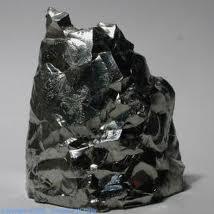

A highly radioactive metal, of which only a few atoms have ever been made.
| Density | Unknown |
| Melting Point | Unknown |
| Boiling Point | Unknown |
At present it is only used in research.
There are 15 known isotopes of hassium with mass numbers 263 to 277, with isotope-276 having the longest half-life of 1.1 hour. The first attempt to synthesize element 108 took place in 1978 at Russia’s Joint Institute for Nuclear Research (JINR) in Dubna, where a team headed by Yuri Oganessian and Vladimir Utyonkov bombarded radium with calcium and got isotope 270. In 1983, they obtained other isotopes: by bombarding bismuth with manganese they got isotope 263, by bombarding californium with neon they got isotope 270, and by bombarding lead with iron they got isotope 264.
In 1984, at Germany’s Gesellschaft für Schwerionenforschung (GSI) in Darmstadt, a team headed by Peter Armbruster and Gottfried Münzenberg bombarded lead with iron and synthesised isotope 265. Their data which was considered more reliable than that from JINR and so they were allowed to name the element which they did, basing it on Hesse, the state in which the GSI is located.